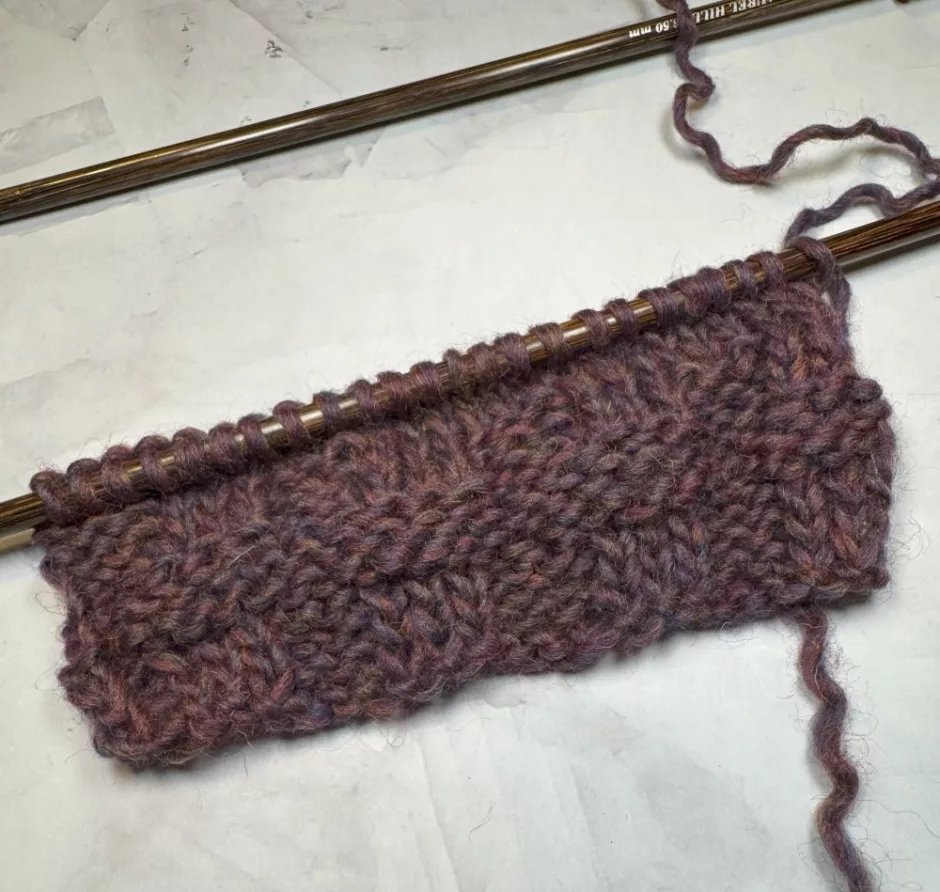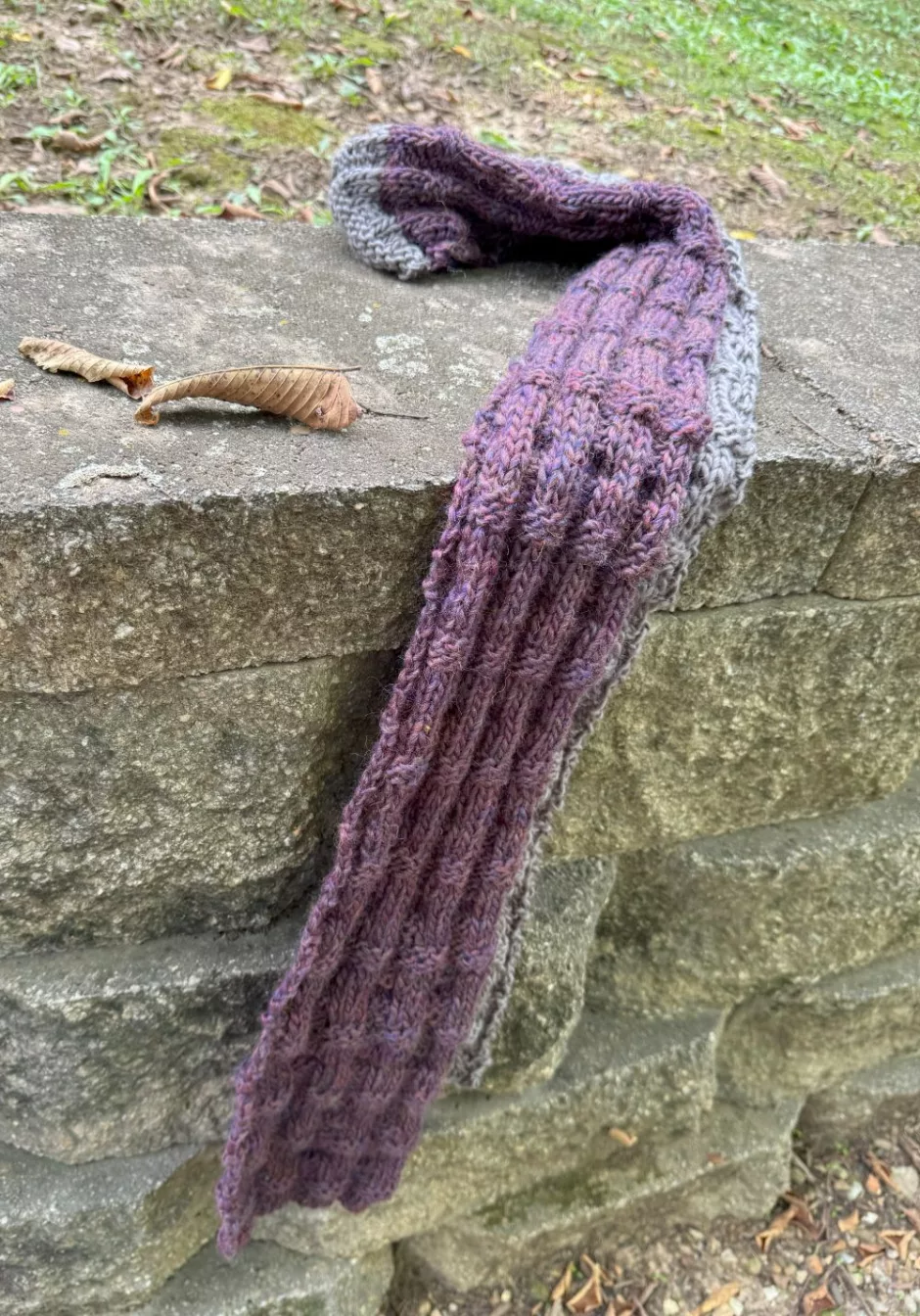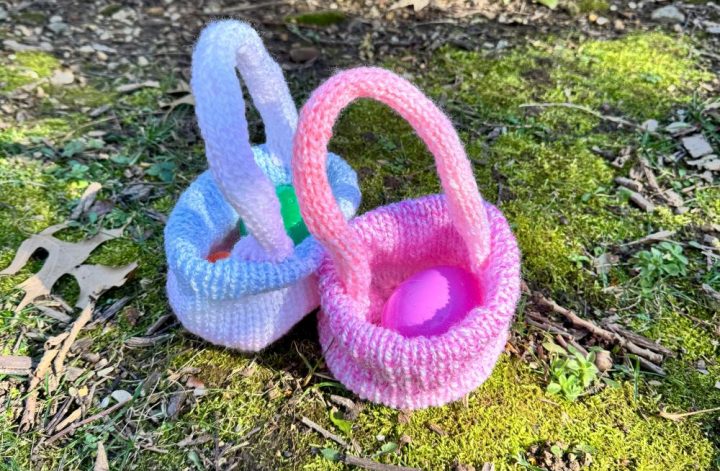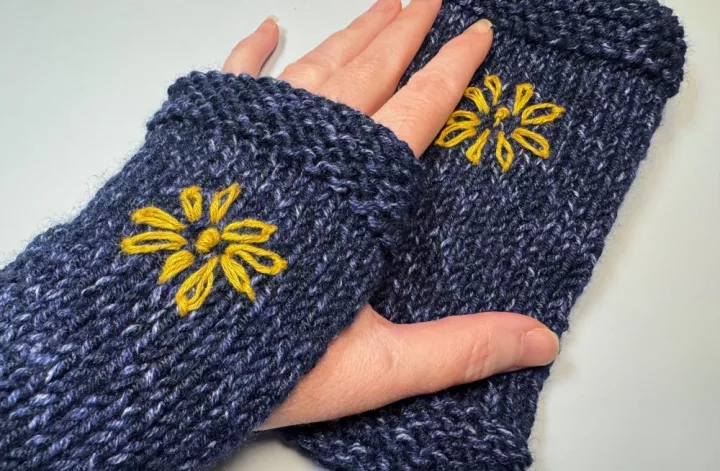Affiliate links may be included for your convenience. View our privacy and affiliates policy for details.
There are a lot of great simple knit and purl stitches you can use in your knitting projects to add a little more interest, as with this Harris Tweed scarf knitting pattern.
Harris tweed is a handwoven Scottish cloth, and the Harris Tweed knitting pattern gives you a similar look with knitting. This scarf is surprisingly quick and easy to knit. I worked mine in two colors because we’re using what we have over here, but a single color would work as well.
It’s a great stitch for a scarf because it’s easy to remember, it looks pretty much the same on both sides and it doesn’t curl.

Supplies
You’ll need about 265 yards total of bulky/chunky/yarn weight 5 yarn. To be more specific, I used about 143 yards of Berroco Peruvia (the purple yarn) and about 122 yards of SWTC Saphira (that’s the gray one). Both are 100 percent wool, though the Saphira is superwash and the Peruvia is not.
It also happens that both yarns are discontinued, but any bulky wool, wool blend or other fiber you like for scarves is fine for this project.
I used size 10.5/6.5 mm straight knitting needles. You’ll also need a tape measure, scissors and a yarn needle.
Gauge
Gauge isn’t critical but I got 16 stitches and 16 rows per 4 inches/ 10 cm in Harris Tweed stitch.
Size
My scarf is about 6 inches/15.24 cm wide and 6 feet/1.8 meters long. You can make yours as long as you like.
Add this project to your Ravelry queue.
Knitting the Harris Tweed Scarf
To make the Harris Tweed scarf, you’ll need a multiple of 6 stitches. I used 24, but if you want a wider or narrower scarf, you can adjust accordingly.

Cast on 24. Work in the Harris Tweed Pattern as follows:
Rows 1-3: *Knit 3, purl 3. Repeat from * across.
Row 4: Knit.
Row 5: Purl.
Row 6: Knit.
Rows 7-9: *Knit 3, purl 3. Repeat from * across.
Row 10: Purl.
Row 11: Knit.
Row 12: Purl.
Repeat rows 1-12 to make your Harris Tweed scarf pattern.
I worked in purple for 3 feet/just shy of a meter before changing colors. I switched to the gray on row 11 so I would have a solid color break on the right side, but it doesn’t really matter when you change colors if you want to.

I continued in gray for 3 feet/just shy of a meter and ended with a ribbing section.
Bind off in knit. Cut yarn and weave in ends.

Reading Your Knitting
This Harris Tweed scarf pattern might sound a little hard to keep track of if you’re a new knitter, but it actually gives you a great opportunity to practice reading your knitting.
If you want when you start you can add a locking stitch marker in the fabric on the right/front side (that’s the odd numbered rows) to help you keep track.

But once you have the first repeat done, it’s easy to see from the right/front side that you have a section of ribbing, then reverse stockinette, then ribbing again and regular stockinette. This gives you longer columns of stockinette (that’s the v’s) broken up by reverse stockinette (wiggly lines).
Knowing that you can figure out what you need to do next based on what you see. If you just worked a section of all knit and purl rows, you need to do ribbing next.
If you don’t know whether you should knit or purl the row after the ribbing, look and see which one you’ve most recently worked on that side. If you’re seeing ripples up pretty close to the needle, start with a knit row. If you have that nice long column of knits unbroken for a longer stretch, it’s time to purl.
Once you are comfortable reading the pattern you won’t have to keep track of your row count unless you want to for stripes or color blocking purposes.
And that’s all there is to knitting a Harris Tweed scarf! I love scarves as a way to introduce new stitch patterns, but there are lots of things you can do with this stitch, from home items to socks. It would make a great vest, too!




